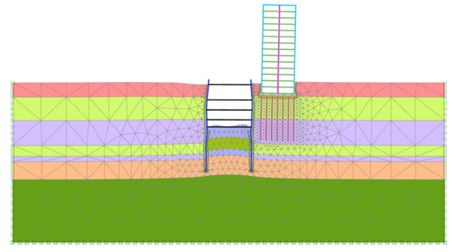PLAXIS Fundamental: Modelling of Undrained Behavior

Brief Intro about PLAXIS:
•PLAXIS uses FEM approach to analyze the deformation, stability, and groundwater flow in geotechnical engineering.
•Development began in 1987 (at Delft UoT) with first PLAXIS for Windows was released in 1998.
Highlights of undrained modeling in PLAXIS:
- Three (3) methods: Undrained (A), Undrained (B), Undrained (C).
- In older PLAXIS (prior to PLAXIS 2D 2010), these choices are not clearly defined → Be careful !!
- For undrained modeling → Soil is assumed fully saturated.
- Excess pore pressure can be generated with either Undrained (A) or (B).
- Advance option (e.g. Van Genuchten) is available for undrained modeling of unsaturated soil.
Watch our Watch & Learn Series to learn more:
Summary:
- PLAXIS is capable to perform undrained simulation.
- Undrained (A) and Undrained (B) are the recommended options for modeling the undrained behavior (applying effective stress analysis).
- Stiffness parameter inputs for Undrained (A) and Undrained (B) are in terms of effective stiffness; the bulk modulus of water is calculated accordingly.
- PLAXIS provides the SoilTest feature to test the soil model/parameters using commonly used laboratory test → This does NOT substitute the real laboratory test.
- Mohr-Coulomb model is certainly limited for capturing the real behavior of soil in undrained path → Advanced soil model should be considered (e.g. hardening soil).
And lastly, if your company is interested on PLAXIS Software, we have a SPECIAL JULY OFFER of 10% disc. + 1-day PLAXIS Getting Started Training for (up to) 3 Pax. Contact us at sales@geostruktur.com for further discussion.
Comments
